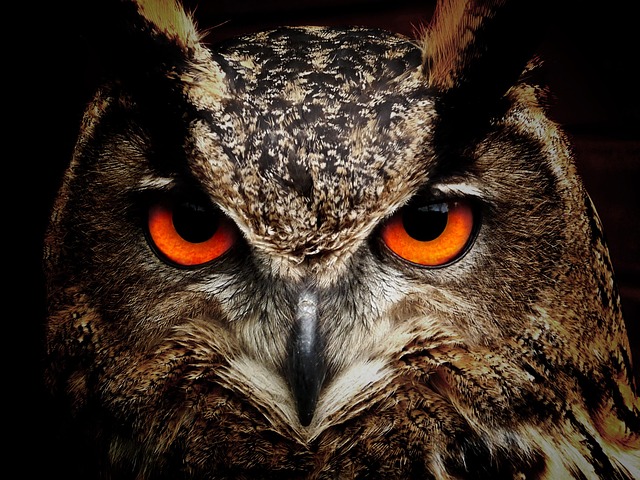Birds are fascinating creatures that inhabit various environments around the world. They possess unique behaviors and communication methods, which often include warning signals. In this introduction, we will explore the topic of whether birds have the ability to warn humans about potential dangers or threats.
Table of Contents
The Importance of Bird Warning Calls in Nature
Do birds warn you? It may seem like a strange question, but if you’ve ever been out in nature and heard a sudden burst of bird calls, you may have wondered if they were trying to tell you something. Well, the truth is, birds do use warning calls to communicate with each other and, sometimes, with us humans too.
Birds are highly social creatures, and they have developed a complex system of vocalizations to communicate with each other. One of the most important types of calls they use is the warning call. When a bird spots a potential threat, such as a predator or an intruder in their territory, they will emit a series of loud, sharp calls to alert other birds in the area.
These warning calls serve several purposes. First and foremost, they let other birds know that there is danger nearby. By hearing the warning calls, other birds can take evasive action, such as flying away or hiding in the vegetation. This helps to protect the entire flock or community from harm.
But what about us humans? Can we understand and interpret bird warning calls? Well, the answer is yes and no. While we may not be able to understand the specific meaning of each call, we can often recognize the general tone and urgency of the warning. For example, if you hear a chorus of loud, frantic calls, it’s a good indication that there is something dangerous in the vicinity.
Birds have also been known to use warning calls specifically directed at humans. This is especially true in areas where birds have become accustomed to human presence, such as parks or gardens. In these situations, birds may recognize humans as potential threats and will emit warning calls to alert others to our presence.
So, the next time you’re out in nature and you hear a sudden burst of bird calls, pay attention. It could be a sign that there is danger nearby, whether it’s a predator or simply another human intruder. By listening to and respecting these warning calls, we can help to protect the birds and their habitats.
But bird warning calls aren’t just important for our safety. They also play a crucial role in maintaining the balance of nature. By alerting other animals to the presence of predators, birds help to keep populations in check and prevent overgrazing or overhunting. In this way, they act as natural guardians of the ecosystem.
In addition to warning calls, birds also use a variety of other vocalizations to communicate with each other. These include songs, which are often used to attract mates or establish territory boundaries, as well as contact calls, which help birds stay in touch with each other when they are out of sight.
So, the next time you’re out in nature and you hear the melodic song of a bird or the sharp warning calls of a flock, take a moment to appreciate the incredible communication skills of these feathered creatures. They may not be speaking our language, but they are certainly trying to tell us something. And by listening and observing, we can gain a deeper understanding and appreciation for the natural world around us.
How Birds Communicate Danger to Their Flock

Do birds warn you? It may seem like a strange question, but if you’ve ever observed a flock of birds suddenly take flight or heard their loud chirping, you might have wondered if they were trying to communicate something to you. Well, the truth is, birds do communicate danger to their flock, and sometimes, they even warn humans too!
Birds have a remarkable ability to communicate with each other. They use a variety of signals and calls to convey different messages, including warnings about potential threats. One of the most common ways birds communicate danger is through alarm calls. These calls are loud and distinctive, and they serve as a way for birds to alert their flock members about the presence of a predator or other potential danger.
When a bird spots a threat, it will emit a specific alarm call that is unique to that particular danger. For example, if a bird sees a hawk flying overhead, it might emit a high-pitched screech to warn its flock members. Other birds in the area will hear this call and immediately know that there is a predator nearby. They will then take evasive action, such as flying away or seeking cover, to protect themselves from the threat.
But what about humans? Can birds warn us too? The answer is yes! Birds have been known to warn humans about potential dangers, especially when they have developed a bond or trust with them. There have been numerous accounts of pet birds alerting their owners to house fires, gas leaks, or even intruders.
In one remarkable story, a pet parrot named Willie saved the life of a toddler by repeatedly shouting “Mama, baby!” when the child’s babysitter had a seizure. The parrot’s loud and persistent calls caught the attention of a neighbor who then called for help. Thanks to Willie’s warning, the child received medical attention in time, and the babysitter was able to recover.
So how do birds communicate danger to humans? Well, just like with their flock members, birds use alarm calls to alert us to potential threats. If you’re outside and suddenly hear a chorus of loud chirping or screeching, it could be a sign that there is danger nearby. It’s important to pay attention to these warning signals and take appropriate action to protect yourself.
Of course, not all bird calls indicate danger. Birds also communicate for other reasons, such as to attract mates or establish territory. It’s essential to learn to distinguish between different types of bird calls to understand when they are warning you and when they are simply going about their daily activities.
In conclusion, birds are incredible communicators, and they have a unique ability to warn their flock members and even humans about potential dangers. Their alarm calls serve as a vital tool for survival, allowing them to stay safe in their environment. So the next time you hear a bird chirping loudly or see a flock taking flight, remember that they might just be trying to warn you about something. It’s always wise to listen to nature’s messengers!
Understanding the Different Types of Bird Warning Signals
Do birds warn you? It may seem like a strange question, but if you pay close attention to the behavior of birds, you’ll realize that they often communicate warning signals to humans and other animals. Understanding these warning signals can be crucial for our safety and well-being. In this article, we will explore the different types of bird warning signals and how to interpret them.
One of the most common bird warning signals is vocalization. Birds have a wide range of calls and songs, and many of them are used to communicate danger. For example, when a bird spots a predator nearby, it may emit a loud, high-pitched alarm call to alert other birds in the area. These alarm calls can be quite distinctive and are often repeated several times to ensure that the message is heard.
In addition to vocalization, birds also use body language to communicate warnings. For instance, when a bird feels threatened, it may puff up its feathers to appear larger and more intimidating. This behavior is often accompanied by aggressive posturing, such as spreading its wings or raising its crest. These visual signals are meant to deter potential threats and warn them to stay away.
Another important type of bird warning signal is the mobbing behavior. When a bird detects a predator, it may gather a group of other birds to harass and drive away the threat. This behavior is particularly common among smaller birds that are vulnerable to predation. By mobbing together, they increase their chances of survival and send a clear message to the predator that they are not an easy target.
It’s worth noting that not all bird warning signals are directed at humans. Birds also communicate with each other using these signals. For example, during the breeding season, male birds often display aggressive behavior towards other males to establish dominance and protect their territory. This behavior serves as a warning to other males to stay away and not challenge their authority.
Understanding bird warning signals can be beneficial in many ways. For birdwatchers, it adds an extra layer of excitement and engagement to their hobby. By paying attention to the behavior and vocalizations of birds, they can gain insights into their social dynamics and interactions with their environment.
Moreover, being aware of bird warning signals can also help us stay safe in certain situations. For example, if you’re hiking in the woods and suddenly hear a chorus of alarm calls from birds, it’s a good indication that there might be a predator nearby. By heeding these warnings, you can take appropriate precautions and avoid potential danger.
In conclusion, birds do indeed warn us through various signals. From vocalizations to body language and mobbing behavior, birds have developed sophisticated ways to communicate danger to both humans and other animals. Understanding these warning signals not only enhances our appreciation for the natural world but also helps us stay safe in different situations. So, the next time you hear a bird’s alarm call or witness its aggressive behavior, remember that it’s trying to warn you about something important.
The Role of Bird Warning Behavior in Human Safety
Do birds warn you? It may seem like a strange question, but if you pay close attention to the behavior of birds, you might be surprised at what you discover. Birds have a unique ability to sense danger and communicate it to others of their kind. This warning behavior not only helps them survive in the wild but can also play a role in human safety.
Birds are highly perceptive creatures. They have keen eyesight and acute hearing, allowing them to detect even the slightest changes in their environment. When a potential threat is detected, birds will often emit warning calls to alert others in their flock. These calls can vary in pitch, volume, and duration, depending on the level of danger perceived.
One common example of bird warning behavior is when a predator is nearby. Birds have a natural fear of predators, such as hawks or cats, and will sound the alarm to warn others of their presence. This warning call serves as a signal for other birds to take cover or fly away to safety. By paying attention to these warning calls, humans can also become aware of the presence of a predator in the area.
But it’s not just predators that birds warn us about. They can also alert us to other potential dangers, such as severe weather conditions. Many bird species have a heightened sensitivity to changes in atmospheric pressure, which often precede storms or other weather events. When birds sense these changes, they may exhibit restless behavior or gather in large flocks. These signs can serve as a warning for humans to take precautions and seek shelter before the storm hits.
Birds can also warn us about the presence of toxic substances in the environment. Some bird species have a remarkable ability to detect and avoid areas contaminated with pollutants or chemicals. They may refuse to land or feed in these areas, or exhibit signs of distress when exposed to toxic substances. By observing the behavior of birds in our surroundings, we can gain valuable insights into the quality of our environment and take steps to protect ourselves from potential harm.
In addition to their warning calls, birds also use visual displays to communicate danger. For example, certain bird species will engage in “mobbing” behavior when they encounter a threat. They will gather in large numbers and swoop down on the predator, making loud noises and aggressive movements. This behavior not only serves to intimidate the predator but also warns other birds in the area of the potential danger. By observing these mobbing displays, humans can also become aware of the presence of a threat and take appropriate action.
So, the next time you hear the chirping of birds or witness their unusual behavior, don’t dismiss it as mere noise or curiosity. Pay attention to their warning calls, their restless movements, and their mobbing displays. They may be trying to communicate something important to you. By being aware of the role of bird warning behavior in human safety, we can better protect ourselves and appreciate the remarkable abilities of these feathered creatures.
Conclusion
In conclusion, birds do have the ability to warn humans of potential dangers or threats in their surroundings. They use various vocalizations and behaviors to communicate warnings, such as alarm calls or aggressive displays. These warning signals can help humans become aware of potential risks and take necessary precautions.
For licensing reasons, we must provide the following notice: This content was created in part with the help of an AI.


